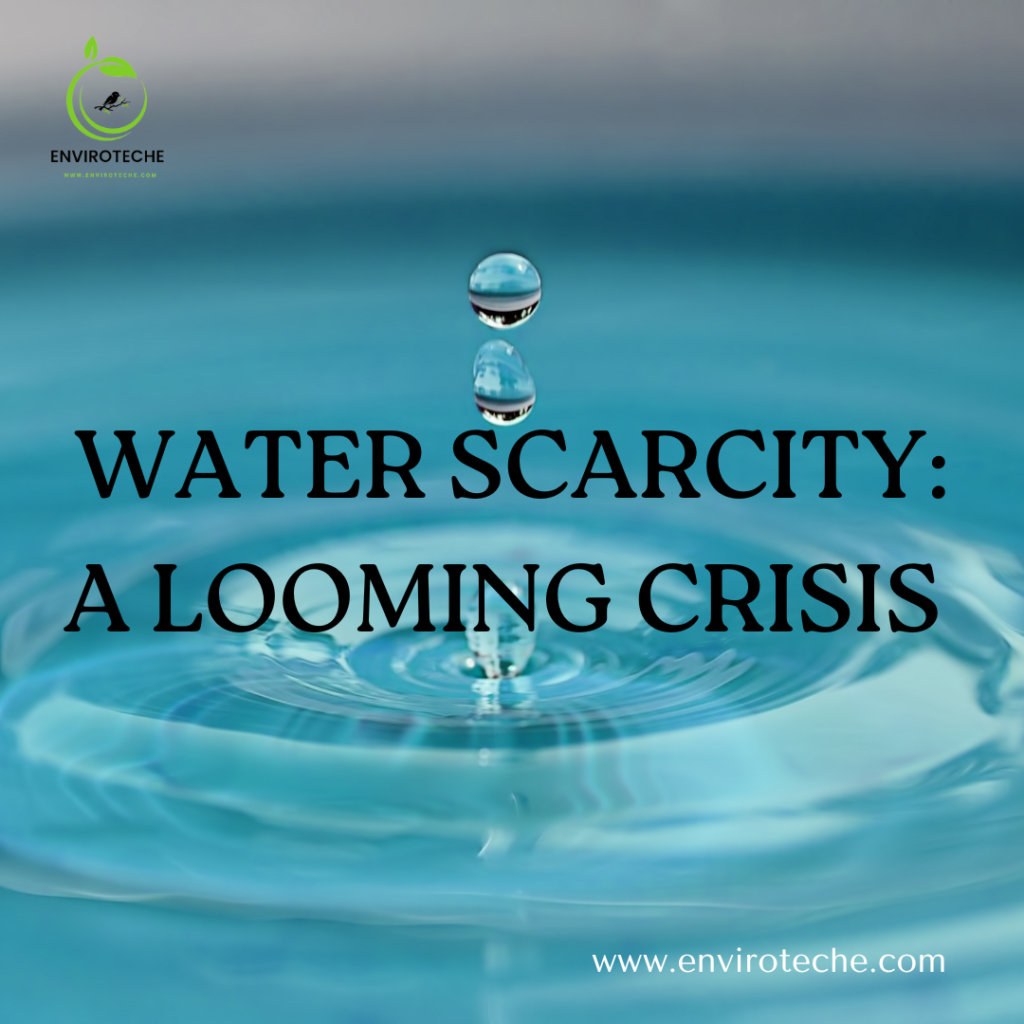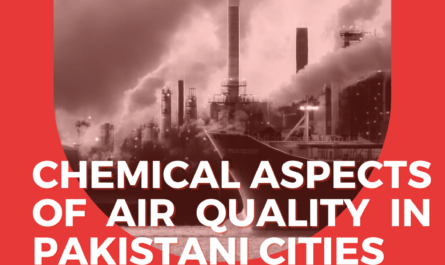Table of Contents

What is Water Scarcity?
Water scarcity simply means Shortage of water arises due to indiscriminate use of water. The situation where, the demand of water exceeds its supply’ there water scarcity happen. It can be due to several reasons like climate change, increased population, improper infrastructure, over use of water resources, poor water management and sustainable agriculture etc. Here we will discuss the causes, consequences and solutions to mitigate this severe crise.
Causes of Water Scarcity
The causes of water scarcityare as follows
Demand and usage
The entire volume that customers want to meet their needs is known as the water demand. Regarding the global water demand that exists on every single day, it’s quite staggering. On average, the global water demand is estimated to be around 4 trillion cubic meters per day. Widely 70 % water is used in agriculture, 8 % for domestic use and 22 % water used by industries.
Domestic
Water is required domestically for drinking, cooking, cleaning, and other household chores.
We looked at how much water was used at home in a few Pakistani cities. A single person’s daily food production needs between 2600 and 5300 litres of water, compared to the minimal 50 litres needed for home use. Since it takes 50–70 times more water to cultivate food than it does for residential use, food security and water security are therefore closely intertwined.
Groundwater and precipitation are used as municipal supplies in metropolitan areas.
Agricultural
Irrigation and other agricultural uses require massive amounts of water. Many of the region’s countries are extremely concerned about the emerging water shortages.
About 19.5% of Pakistan’s GDP comes from agriculture, which also employs 42% of the labour force, generates 64% of export revenue, and supports the lives of 62% of the nation’s people (Economic Survey, 2016–17). Thus, the agricultural sector in Pakistan now uses more water than any other sector (more than 90%).
Industrial
Growing population promotes industrial revolution. Industries play a crucial role in water pollution that further leads water scarcity. For instance, industries releases toxic organic and inorganic chemicals in waters without treating it well. That the way water bodies get polluted and people faces water lackness and use polluted water, resulting so many waterborne disease.
It’s important for industries to implement sustainable practices and technologies to minimize their impact on water resources.
Pollution of water
Water can be polluted by so many factors including agricultural contaminants seeping down to ground water , industrial effluents getting mixed up with water bodies making it unfit for use, and improper sanitation also cause water pollution.
Maritime traffic
Marine transportation generates negative impacts on the marine environment through oil spills, ballast water discharge, and the release of pollutants from ship operations. Marine traffic affects aquatic environments by chemical pollution, noise pollution and collisions with marine mammals.
Every day, a cruise ship produces fifteen gallons of hazardous chemicals, which severely contaminate the water and harm aquatic life.
Fuel spillage
Fuel spillages from maritime traffic causes water scarcity and water pollution.
Experiences showing that When fuel is spilled into water bodies, it contaminates the water, making it unfit for consuming and destroying aquatic ecosystems. The spilled fuel can get dissolve, spread, or form smooth oiled layers on the surface of water, affecting marine life and disrupting the balance of ecosystems. Moreover, if the polluted water is a source for drinking or agriculture, it can lead to water scarcity by reducing the availability of clean water for human and agricultural needs. It is difficult to combat. Cleanup efforts are often challenging, and long-term environmental damage may persist.
Radioactive waste disposal
In addition, nuclear power plants, hospitals, businesses, and research facilities have produced radioactive waste. Atomic wastes released by nuclear power plants contribute to the radioactive pollutants present in marine water. These powerhouses also use polluted water for coolant purposes.
Consuming water that poses serious health risks to humans, such as the possibility of cancer, is advised.
When using radioactively contaminated water for irrigation, agricultural land may become untouchable.
Increased population
The Incessant growth of population lead to higher demand of water to meet up their domestic. agricultural and industrial needs of water. Areas with a high population density and limited water supplies are usually the most water scarce. This heightened demand often leads to over-extraction of water from rivers and aquifers, depleting water sources and causing scarcity in various regions.
Climate change
In certain parts of the world, climate change may have the least impact on the development of water scarcity. Water scarcity resulting from climate change, for instance Traditional water availability is disrupted by changes in precipitation patterns, including modified rainfall and an increase in the frequency of extreme weather events like floods and droughts. Elevated temperatures have the potential to accelerate evaporation rates, ultimately depleting surface water resources.
Poor management
Poor water management exacerbates water scarcity by inefficiently utilizing and depleting available water resources. Inefficient use of water resources, lack of investment in infrastructure, and inadequate governance can all exacerbate the problem.
Consequences of water scarcity
As we know it very well that Water scarcity is a grave situation. It has worse results that are explained below.
Waterborne diseases
Every year, millions of people die from diseases known as “waterborne diseases,” which are brought on by drinking tainted water. The need for clean drinking and bathing water is growing in both developed and developing nations, making the prevention of water-borne illnesses crucial. When wastewater is dumped into water Bodies without treating it, causing contamination of water that turn induce waterborne disease.
When there’s no clean water available then people are intended to drink contaminated water that cause so many problems even can cause death of individual.
Impacts on global food production
Earth’s capacity to feed an increasing number of people with fewer resources per person as water gets scarcer and more unpredictable becomes a significant policy challenge. It is known that when there’s no much amount of water available for irrigation and other kind of agricultural practices then farmers couldn’t be able to grow crop that automatically deplete food production. And there will no much availability of food in future .That turn cause to loss one’s economy.
Droughts
Droughts can have a worse effect on an area if there are inadequate water supplies or if water resources are not managed appropriately. As a result, there are disparities between the natural system’s capacity to supply water and its needs. Including overuse of water resources, climate change, and inefficient water management practices. Addressing water scarcity through sustainable water management is crucial to mitigate the risk and impact of droughts.
Damaged ecosystem
When there is so much contamination in water bodies like rivers , the chances of life there will also b decreased.
Alterations to ecosystems, like deforestation or wetland drainage, can disrupt the natural water cycle. Forests and wetlands play crucial roles in regulating water flow, and their destruction can lead to irregularities such as increased runoff, reduced groundwater recharge. When we drain too much water from soil, it can lead a barren land where plants can’t get enough water to grow resulting droop and even it’s death.
Solutions to mitigate water scarcity
There are so many solutions to approach water scarcity and to mitigate it.
Waste water treatment
In the past thirty years, governmental authorities, business, and society at large have grown more concerned about environmental issues related to biological and chemical contamination of water supplies. The physical, chemical, and biological processes used in modern wastewater treatment technologies combine to extract soluble pollutants and insoluble particles from effluents.
Water management
Water management involves planning, implementing, and regulating the use of water resources to meet various needs while ensuring sustainability. It includes strategies to conserve nature resources of water, wastewater treatment before dumping, infrastructure maintenance and also climate change adaptations.
Rainwater harvesting
It’s a method of gathering and holding rainwater. Rainwater harvesting can then be utilised by families and rainfed agriculture. Regretfully, germs and dangerous compounds can contaminate rainwater, necessitating treatment before use. Two techniques to lessen pollution are solar technology and slow sand filtering.
General Awareness
People are willing to give up wasteful habits connected to their bodily hygiene, such as keeping the water running while taking a shower, but they are unwilling to give up easy water-saving measures like replacing a leaking tap or using an economy toilet flushing button. Institutions should host lectures to reduce water scarcity and conserve water.
Role of an individual
Individuals can save water by fixing leaks promptly, using water-efficient appliances, practicing shorter showers, and collecting rainwater for plants. Being mindful of daily water usage contributes to overall conservation efforts.
What is blue and green water scarcity?
Water found in lakes, rivers, groundwater, and the frozen liquid found in glaciers and polar ice caps is referred to as “blue water.” Green water is the fresh water that is retained in the soil and made available to plants.
In summary, there is a shortage of both blue and green water due to overuse and misuse of water.
Water scarcity footprints
Water scarcity footprint assesses impacts associated with water use only, and measures an individual’s or organization’s impact on water scarcity. It considers water consumption, pollution, and the local water stress level. It helps assess and reduce the overall strain on water resources.
Conclusion
Water scarcity is a grave situation nowadays that demands immediate attention. It is actually the shortage of clean drinking water. Addressing it requires a combination of sustainable water management practices, conservation efforts, and a collective commitment to ensuring equitable access to this vital resource for current and future generations.
Author detail:
Malika Samreen
Department of Chemistry, University Of Agriculture Faisalabad, Sub-Campus Toba Tek Singh
Check Other Scholarships:

